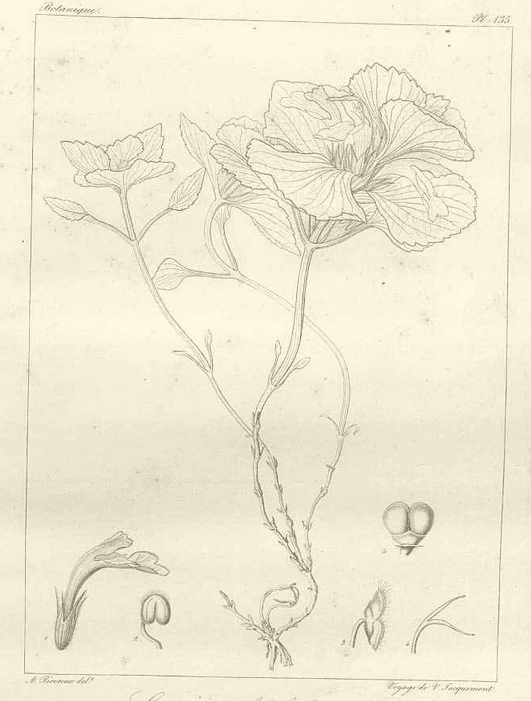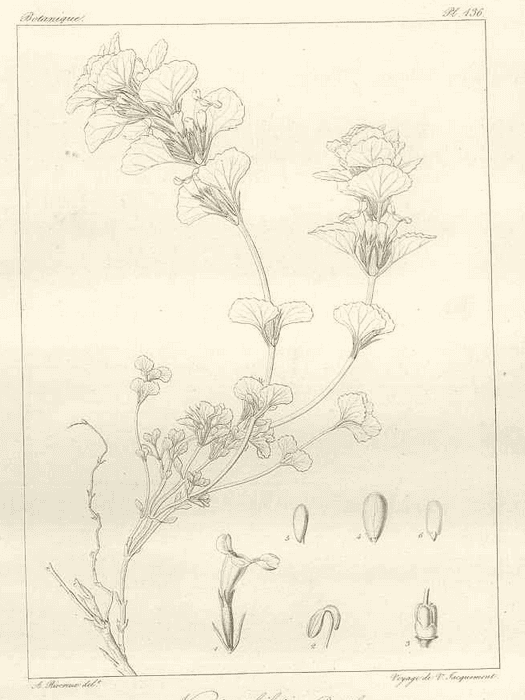Eriophyton, Spang tshan pu ru སྤང་ཚན་སྤུ་རུ
Spang tshan pu ru (Tibetan)Mao Yao Cao 毛药草, Mian Shen 綿參 (Eriophyton, TCM)
 Alajja rhomboidea
Alajja rhomboideaV. Jacquemont, Voyage dans l’Inde pendant les années 1828 à 1832, (1844)
 Marmoritis rotundifolia (syn. Nepeta thibetica
Marmoritis rotundifolia (syn. Nepeta thibeticaV. Jacquemont, Voyage dans l’Inde pendant les années 1828 à 1832 (1844)
Botanical name:
A number of herbs have been listed as a source of Spang tshan pu ru:
- Eriophyton wallichi (syn. E. wallichianum) (primary source)
- Alajja rhomboidea (syn. Eriophyton afghanicum, Lamium rhomboideum) (primary source)
- Saxifraga gemmuligera (syn. S. gemmigera)
- Marmoritis rotundifolia (syn. Nepeta thibetica, Glechoma rotundifolia, G. thibetica)
Parts used:
Whole plant
Temperature & Taste:
Cool, dry. Sweet, Bitter
Uses:
1. Clears Phlegm-Heat, Stops Cough:
-Heat-type Cough, Bronchitis; Cough with Chest pain
-Inflammation and Pus in the Lungs
-Pneumonia, Consumption
-Lymph swellings
2. Clears Damp-Heat, Resists Poison:
-Diarrhea, Dysentery
-Food and Water Poisoning
3. Clears Heat, Moves the Blood, Promotes Healing:
-Wounds, Trauma
-Ruptured Blood vessels
-Wounds with Nerve damage
Dose:
Decoction: 9–15 grams (TCM)
Powder: 2–5 grams
Main Combinations:
1. Chronic Bronchitis, Eriophyton with Tabasheer, Solms-laubachia, Hypecoum, Hippophae, Tinospora, Phlomis
Major Formulas:
Cautions:
None noted
